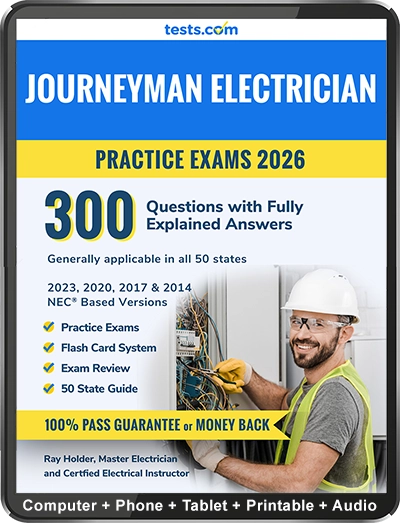2026 Edition
Electrician Math Practice Test
Study Online Instantly

Click to Save 50% Now
2026 Edition

Take this free Electrician Math Practice Test to study for the electrician math problems on your electrician license exam.
Most states require an electrician to pass an exam to receive a journeyman or master electrician license. State exams include math problems such as power and current formulas, branch circuit load calculations, voltage drop, raceway fill and sizing and more.
For help with math calculations on electrician license exams, the following two ebooks written by Ray Holder (Master Electrician and Certified Electrical Trade Instructor) focus on math and show you, in a step-by-step way, how to solve electrician math problems:
To prepare for your Electrician Exam, the following two practice exams by Ray Holder (Master Electrician and Certified Electrical Trade Instructor) have 300 questions with fully explained answers and include electrician math problems:
- Journeyman Electrician Practice Exams
- Master Electrician Practice Exams
With Tests.com, you have the option to purchase a practice test kit based on the 2014, 2017, 2020 or 2023 National Electrical Code (NEC). Check with your local code official to determine which code applies to your exam. Use our interactive test platform to simulate the exam. Take as many tests as you need and there are no recurring charges.